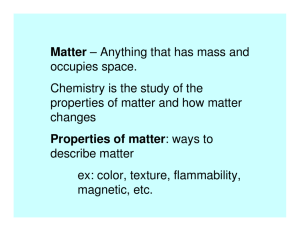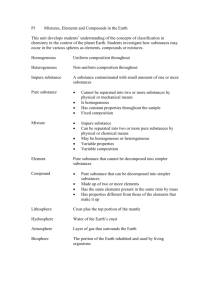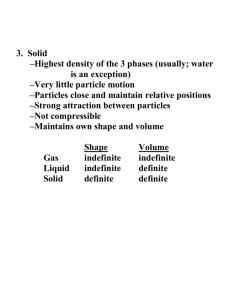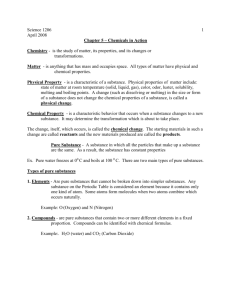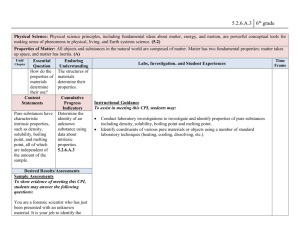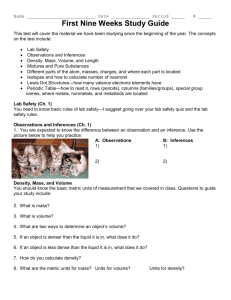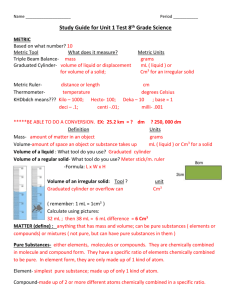Ch 2 Matter
advertisement
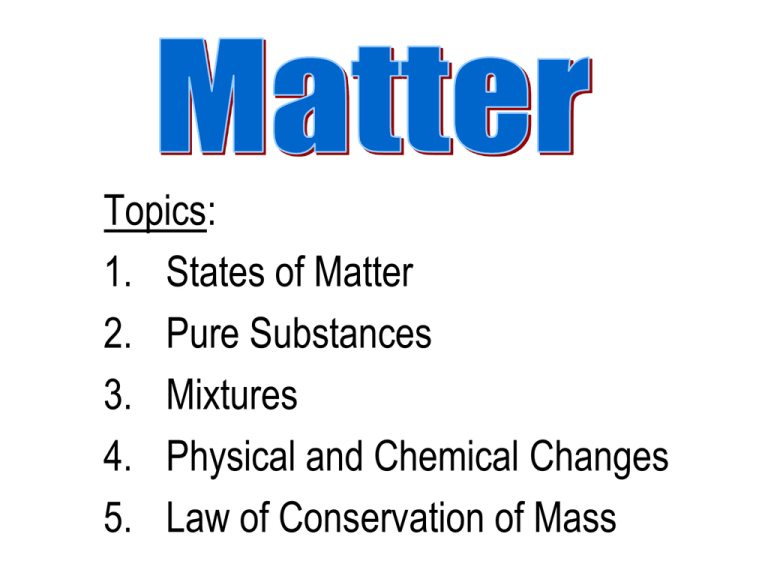
Topics: 1. States of Matter 2. Pure Substances 3. Mixtures 4. Physical and Chemical Changes 5. Law of Conservation of Mass Everything that has mass and volume is called matter. States of Matter Uses of Plasma •Computer chips and integrated circuits •Printing on plastic food containers •Computer hard drives •Energy-efficient window coatings •Electronics •High-efficiency window coatings •Machine tools •Safe drinking water •Medical implants and prosthetics •Voice and data communications components •Audio and video tapes •Anti-scratch and anti-glare coatings on eyeglasses and other optics •Aircraft and automobile engine parts Classification of Matter Characteristics of Pure Substances • Fixed composition • Cannot be separated into simpler substances by physical changes • Only changed chemically • Properties don’t change. 2 Types of Pure Substances – All use symbols! • • • • Elements Cannot be broken down by chemical means Ex. Gold, Sodium, Copper, Oxygen Single symbols, atoms Au, Na, Cu, O • • • • Compounds 2 or more elements chemically combined Formula, Molecule Ex. Water, Carbon Dioxide, Oxygen gas H2O, CO2, O2 What is a Mixture? • 2 or more substances NOT chemically bonded. • • • • No formulas or symbols Variable composition Parts keep individual properties Separated into pure substances by physical methods Homogeneous VS Heterogeneous •Look the same throughout •Examples •Solutions •Solute & Solvent •Don’t look the same throughout or have different size particles •Examples •Suspension •Colloid (liq/solid) •Emulsion (liq/liq) Physical Properties – observed & measured w/o changing substance • • • • • • Density Size Boiling Pt. Shape Mass Texture • • • • • • Melting Pt. Strength Hardness Magnetism Color Volume What do physical properties determine? • Determine uses for item. –Aluminum for foil –Isopropyl alcohol for cooling –Graphite for writing Methods to separate mixtures • • • • • Filtering Distillation Magnets Evaporation Chromatography Chemical Properties • Describes how substance changes into a new substance, – Reactions – Energy and mass – Ex. – burning, rusting, acid/base reactions rearrange Chemical Changes • Used to change pure substances • 5 signs of chemical change – Temp change – Light – Color change – Bubbles – Smell • Make new substances Law of Conservation of Mass Matter cannot be created nor destroyed. It is just converted from one form to another.




